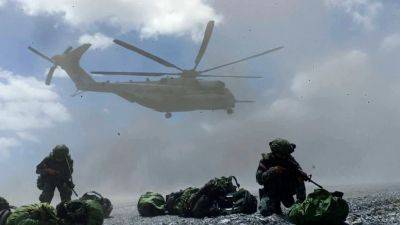US emboldening Philippines to square off with China at sea
US Marines joined Filipino counterparts on May 5, 2024, for a mock battle at a telling location: a small, remote territory just 100 miles off the southern tip of the contested island of Taiwan.
The combat drill is part of the weekslong Exercise Balikatan that has brought together naval, air and ground forces of the Philippines and the United States, with Australia and France also joining some maneuvers.
With a “maritime strike” on May 8 in which a decommissioned ship was sunk and exercises at repelling an advancing foreign army, the aim is to display a united front against China, which Washington and Manila perceive as a threat to the region. Balikatan is Tagalog for “shoulder to shoulder.”
Joint Philippines-US naval drills have become an annual event. But as an expert in international relations, I believe this year’s drills mark an inflection point in the regional politics of the South China Sea.
For the first time, warships taking part in the exercise ventured outside the 12-mile boundary that demarcates the territorial waters of the Philippines. This extends military operations into the gray area where the Philippines’ exclusive economic zone rubs up against the territory claimed by China and designated by its “nine-dash line.”
Also for the first time, the US deployed an advanced mobile launcher for medium-range ballistic and cruise missiles of a type that had been banned under the now-defunct Intermediate-Range Nuclear Forces Treaty. In addition, the Philippine Navy is showing off its newest acquisition, a South Korean-built missile frigate.
The South China Sea has long been the source of maritime disputes between China, which claims the vast majority of its waters, and nations including Vietnam, the Philippines,







